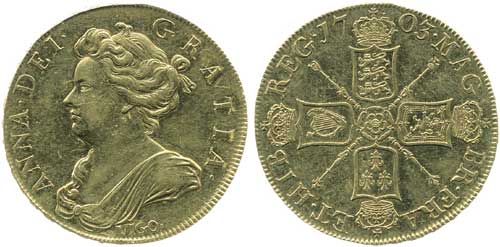
Auction: 7010 - Ancient, English & Foreign Coins & Comm Medals
Lot: 428
Anne (1702-14), the celebrated Vigo Five Guineas, 1703, first draped bust left, vigo. provenance below with double struck I, anna.dei. gratia., toothed border both sides, dies
Sold for
£82,000




